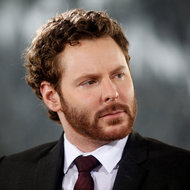But it was an accompanying app called Disney Infinity: Action! that summed up what’s at stake for the company. The app allows users to place themselves inside the game and make short videos of the action. As an example, Disney showed a video of a digital Capt. Jack Sparrow aiming a cannon at John Pleasants, co-president of Disney Interactive, and lighting the fuse.
Kaboom! Mr. Pleasants disappeared.
It was all in good fun. But Mr. Pleasants is on a very hot seat, no doubt about it. Infinity, which cost Disney over $100 million to develop, according to analysts, is viewed as a make-or-break effort to turn around the company’s money-losing gaming and Web division after years (and years) of trying.
“It’s the most ambitious creative undertaking we’ve ever done,” Mr. Pleasants said on Sunday at D23 Expo, a biennial convention for Disneyphiles.
Infinity allows users to mix and match Disney and Pixar characters in rollicking video game adventures. Players collect action figures – Woody, Mickey, Sulley, Mr. Incredible, Rapunzel – and transfer them into the game’s action by plugging them into a sensor base. (A starter kit, which includes the base and several figurines, sells for about $75; other figures are sold separately.)
“The answer to the question, ‘Can I do that?’ is simply, ‘Yes,’” Mr. Pleasants said, referring to the mash-up nature of Infinity, which he oversees.
Disney is taking a risk by releasing Infinity at a time when parents are mostly concerned with back-to-school shopping. (The release was initially planned for June.) Part of the Disney’s hopes turn on schoolyard chatter — that early Infinity buyers will rave and turn it into a must-have holiday item. Disney also wanted Infinity to land in stores ahead of new merchandise from Activision, which sells the similar Skylanders game series.
How Infinity will fare is anyone’s guess. Independent sales data will not be available until late September. But the game, backed by an aggressive advertising campaign, has the early earmarks of a success.
It is generating substantial buzz among gamers, an audience that has not always been the friendliest toward Disney. (“It’s even better than I had hoped,” wrote the influential gaming site Kotaku last month.) The Infinity booth was mobbed at D23 Expo last weekend, with people waiting in line for more than an hour for the chance to take the game for a test drive.
And Infinity has about 533,000 Facebook “likes”; Skylanders, which has generated $1.5 billion in sales in the last two years, has about 451,000.

Article source: http://www.nytimes.com/2013/08/17/business/media/disneys-hopes-riding-on-new-video-game.html?partner=rss&emc=rss

